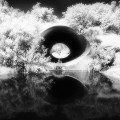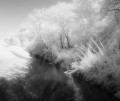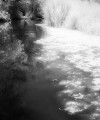Rumme: The Living River: The Pajaro River Watershed Experience
Rumme: The Living River: The Pajaro River Watershed Experience was a collection of work from more than 40 local artists to bring awareness to the social and legal issues surrounding the Pajaro River with a watershed crossing 4 counties. The exhibit, directed by Lois Robin and Jennifer Colby, opened at the Pajaro Valley Arts Council Gallery in Watsonville on January 9, 2004, and later travelled to Gallery Tonantzin in San Juan Batista and the Gavilan College Library in Gilroy. Pajaro is Spanish for bird, and the river is named for all the birds that nest on its banks between Santa Cruz and Monterey counties, and the mouth on the Monterey Bay as illustrated in the first image, Pajaro Pelican.
















